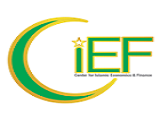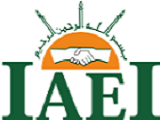Relationship Between Islamic Financial Literacy, Islamic Financial Inclusion and Business Performance : Evidence from Culinary Cluster of Creative Economy
Abstract
The culinary cluster of creative economy in Indonesia has a strong appeal to business actors, so that business growth in the culinary cluster is always above other clusters. But unfortunately, the level of Islamic financial literacy and Islamic financial inclusiveness has not been created properly in this cluster. This study aims to see the relationship between Islamic financial literacy, Islamic financial inclusion and business growth in the culinary cluster of creative economy. The sample in this study was 62 business actors in the culinary cluster. To see this relationship, data were analyzed using the SEM-GeSCA approach. The results of this study indicate that Islamic financial literacy has a positive and significant impact on Islamic financial inclusion and business growth. Other research results also show a positive and significant impact relationship between Islamic financial inclusion and business growth. This result implies that business actors in the culinary cluster must continue to improve Islamic financial literacy and Islamic financial inclusion so that sustainable growth of their business can be created.
Keywords
Full Text:
PDFReferences
Abubakar, H.A. (2015). Enterpreneurship Development and Financial Literacy in Africa. World Journal of Enterpreneurship, Management and Sustainable Development, Vol.11., No.4., pp.281 – 294. Emerald Group Publishing Limited.
Amri, A.J. and Iramani. (2018). Pengaruh Literasi Keuangan Terhadap Kinerja UMKM di Surabaya. Journal of Business and Banking, Volume 8, Number 2.
Babajide, A.A., Adegboye, F.B. and Omankhanlen, A.E. (2015). Financial Inclusion and Economic Growth in Nigeria. International Journal of Economic and Financial Issues. Vol.5, Issue 3.
Bank Indonesia. (2015). Kajian Peningkatan Akses Pembiayaan Bagi Industri Kreatif di Indonesia, Sektor Industri Kerajinan. Jakarta : Bank Indonesia.
BPS. (2017). Ekspor Ekonomi Kreatif 2010 – 2011.
Camara, N., Pena, X. and Tuesta, D. (2014). Factor that Matter for Financial Inclusion : Evidence from Peru. BBVA Working Paper. Madrid.
Camara, N. and Tuesta, D. (2017). Measuring Financial Inclusion: A Multidimensional Index. Bank of Morocco – CEMLA –IFC Satellite Seminar of The ISI World Statistics Congress on Financial Inclusion. Morocco : Marrakech.
Chepngetich, P. (2016). Effect of Financial Literacy and Performance SMEs : Evidence from Kenya. American Based Rsearch Journal, Volume 5, Issue 11, pp. 26 - 35
Chumney, F.L. (2013). Structural Equation Models with Small Samples : A Comparative Study of Four Approaches. Public Access Theses and Dissertations from the College of Eduaction and Human Science, 189. Available at : https://digitalcommons.unl.edu/cgi/viewcontent.cgi?referer=https://www.google.co.id/&httpsredir=1&article=1185&context=cehsdiss. Date of Access : August3, 2020.
Fan, Z. and Zhang, R. (2017). Financial Inclusion, Entry Barrirers and Enterpreneurship : Evidence from China. Sustainability, Vol.9.
Fatoki, O. (2014). The Financial Literacy of Microenterpreneurs in South Africa. Journal of Social Science, Volume 40, Issue 2, pp. 151 – 158.
Foord, J. (2008). Strategies for Creative Industries : an International Review. Creative Industries Journal, Vol.1, Number 2.
Galloway, S. and Dunlop, S. (2007). A Critique of Definitions of the Cultural and Creative Industries in Public Policy. International Journal of Cultural Policy, Vol.13, No.1.
Granham, N. (2005). From Cultural to Creative Industries. International Journal of Cultural Policy, Vol. 11, No.1.
Harvard Manage Mentor. (2012). Performance Measurement : Why Measure Business Performance ?. http://ww3.harvardbusiness.org/corporate/demos/hmm10/performance_measurement/why_measure_business_performance.html.
Herawaty, T. and Raharja, S.J.(2018). Creative Industry Development Strategy in Bandung, Indonesia. Review of Integrative Business and Economics Research, Vol.7, Supplementary Issue 2.
Hidayat, A.R.R.T. and Asmara, A.Y. (2017). Creative Industry in Supporting Economy in Indonesia : Persepctive of Regional Innovation System. 3rd International Conference of Planning in the Era of Uncertainty. IOP Conf. Series : Earth and Environtmental Science, 70.
Howkins, J. (2001). The Creative Economy : How People Make Money from Ideas. London : Penguin.
Hwang, H. and Takane, Y. (2010). Nonliniear Generalized Structured Component Analysis. Behaviormetrika, Vol.37, No.1, pp.1-14.
Investor. (2016). Bekraf Bangun Komitment Perbankan Bagi Ekonomi Kreatif. https://investor.id/archive/bekraf-bangun-komitmen-perbankan-bagi-ekonomi-kreatif. Acces date : September 6th, 2020.
Neely, A., Gregory, M.J. and Platts, K. (1995). Performance measurement system design: a literature review and research agenda. International Journal of Operations & Production Management, Vol. 15 No. 4, pp. 80-116.
Kaplan, R.S. and Norton, D.P. (1996). Linking the balanced scorecard to strategy (reprinted from the balanced scorecard). California Management Review, Vol. 39 No. 1, pp. 53-79.
Kalunda, E. (2013). Financial Inclusion Impact on Small-Scale Tea Farmers in Nyeri County, Kenya. Proceeding of 6th International Business and Social Sciences Research Conference, 3 – 4 January. Dubai : UAE.
Kompas. (2018). Bekraf Dorong Perbankan Syariah Biayai Ekonomi Kretif. https://ekonomi.kompas.com/read/2018/03/23/191700026/bekraf-dorong-perbankan-syariah-biayai-ekonomi-kreatif. Access date : September 6th, 2020.
Lebas, M.J. (1995). Performance Measurement and Performance Management. International Journal of Production Economics, Vol. 41 Nos 1-3, pp. 23-35.
Lusardi, A. and Tufano, P. (2009). Debt Literacy, Financial Experiences and Overindebtedness. Working Paper 14808.
Mulyana, D,. Soeaidy, M.S. and Taufiq, A.R. (2019). Millennial Urban Generations : Does Become “A Current Generation” Shiff Their Attention to Financial Literacy ?. Malaysian Journal of Consumer and Family Economics, Vol. 22.
Mokhtar, N., Sabri, M.F., Ho, C,SF. and Dass, T,A/L,M. (2018). Profile and Defferences in Financial Literacy : Empirical Evidence. Malaysian Journal of Consumer and Family Economics, Vol.21.
OJK. (2017). Strategi Nasional Literasi Keuangan Indonesia (Revisit). Available at : https://www.ojk.go.id/id/berita-dan-kegiatan/publikasi/Documents/Pages/Strategi-Nasional-Literasi-Keuangan-Indonesia-(Revisit-2017)-/SNLKI%20(Revisit%202017)-new.pdf. Access date, 28 June 2020.
Okezone. (2019). Gurihnya Industri Kuliner Bikin Ekonomi Nasional Menggeliat. https://economy.okezone.com/read/2019/01/06/320/2000558/gurihnya-industri-kuliner-bikin-ekonomi-nasional-menggeliat. Access date : September 6th, 2020.
Okello, G.C.B., Ntayi, J.M. and Munene, J.C. (2017). Institutional Framming and Financial Inclusion : Testing the Mediating Effect of Financial Literacy Using SEM Bootstrep Approach. International Journal of Social Economics. Emerald Publishing Limited.
Pascasuseno, A. (2014). Ekonomi Kreatif : Kekuatan Baru Indonesia Menuju 2025. Bedah Cetak Biru Ekonomi Kreatif. Yogyakarta.
Pond, C. (2008). Financial Capability Strategy. OECD-US Treasury International Conference on Financial Education. Taking Financial Literacy to the Next Level : Important Challenges and Promising Solutions. Volume I. US Treasury Department and OECD.
Riwayati, H.E. (2017). Financial Inclusion of Business Player in Mediating the Success of Small and Medium enterprises in Indonesia. International Journal of Economic and Financial Issues, 7 (4), pp. 623 – 627.
Rosello, P. (2014). Policy Investigations, In a New Directions in Creative Economy Policy-Making. British Council Creative Economy Unit Policy Investigations Series. London : British Council
Sharma, D. (2016). Nexus Between Financial Inclusion and Economic Growth, Evidence From Emerging Indian Economy. Journal of Financial Economic Policy, Vol.8, No.1. pp.13 – 36. Emerald Group Publishing Limited.
Sindonews. (2019). Sektor Kuliner Indonesia Tumbuh 12,7%. https://ekbis.sindonews.com/berita/1388028/34/sektor-kuliner-indonesia-tumbuh-127. Access date : September 6th, 2020.
Stern, M.J. and Seifert, S.C. (2008). From Creative Economy to Creative Society. Culture and Community Revitalization : A Colaboration.6. http://repository.upenn.edu/siap_revitalization/6
UGM. (2019). Industri Kuliner Jadi Penopang Terbesar Perekonomian Kreatif Indonesia. https://ugm.ac.id/id/berita/18389-industri-kuliner-jadi-penopang-terbesar-perekonomian-kreatif-indonesia. Access date : September 6th, 2020.
UNCTAD. (2004). Creative Industries and Development, United Nations.
UNCTAD. (2015). Creative Economi Program. https://unctad.org/en/Pages/DITC/CreativeEconomy/Creative-Economy-Programme.aspx. Access date : August 12th, 2020.
UNCTAD. (2018). Creative Economy Outlook. Trend in International Trade in Creative Industries 2002 – 2015.
UNESCO. (2013). Creative Economy Report. https://en.unesco.org/creativity/publication/creative-economy-report-2013. Access date : August 12th, 2020.
World Bank. (2020). Financial Inclusion Support Framework (FISF). https://www.worldbank.org/en/topic/financialinclusion/brief/financial-inclusion-support-framework. Acces date, 28 June 2020.
DOI: http://dx.doi.org/10.24042/febi.v6i1.7946
Refbacks
- There are currently no refbacks.
Copyright (c) 2021
Ikonomika : Jurnal Ekonomi dan Bisnis Islam is a Journal of Islamic Economics and Business, Published by the Faculty of Islamic Economics and Business at UIN Raden Intan Lampung Indonesia. This work is licensed under a Creative Commons Attribution-ShareAlike 4.0 International License.






11.png)



.png)
1.png)
.png)
.png)
.png)
2.png)
.png)
.png)
.png)
2.png)
5.png)